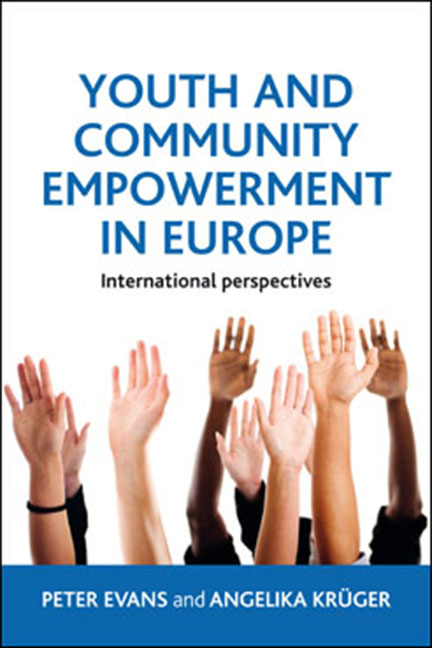Book contents
- Frontmatter
- Dedication
- Contents
- List of figures and tables
- List of abbreviations
- Acknowledgements
- Preface
- Background to the Youth Empowerment Partnership Programme
- one Introduction: the theoretical context of the YEPP approach
- two YEPP I: implementation
- three YEPP I: key changes in YEPP Local Programme Sites
- four YEPP I: meeting the goals
- five YEPP II: learning from YEPP I
- six YEPP II: portraits and overall programme outcomes
- seven YEPP I and II: conclusions and policy implications
- Epilogue: The future of YEPP
- References
- Index
six - YEPP II: portraits and overall programme outcomes
Published online by Cambridge University Press: 07 September 2022
- Frontmatter
- Dedication
- Contents
- List of figures and tables
- List of abbreviations
- Acknowledgements
- Preface
- Background to the Youth Empowerment Partnership Programme
- one Introduction: the theoretical context of the YEPP approach
- two YEPP I: implementation
- three YEPP I: key changes in YEPP Local Programme Sites
- four YEPP I: meeting the goals
- five YEPP II: learning from YEPP I
- six YEPP II: portraits and overall programme outcomes
- seven YEPP I and II: conclusions and policy implications
- Epilogue: The future of YEPP
- References
- Index
Summary
The first five chapters in this book have introduced YEPP and its logic and, through a systematic evaluation, have argued that there is good evidence that the YEPP model causes desired changes in the disadvantaged communities in which it is working, thereby engaging constructively many of the young people living there. Based on this confidence, foundation investment continued for a further period and Chapter Five describes how YEPP developed from a research programme into a development programme.
This chapter provides brief portraits of some of the YEPP Local Programme Sites in order to provide a better picture of how YEPP works on the ground. Information on the five remaining Local Programme Sites (that formed YEPP I), is updated, and a selection of the new sites that began under YEPP II are presented thematically, in order to indicate YEPP's versatility. The themes are:
• expansion within a country
• cooperation across frontiers
• including Roma young people.
The remaining YEPP I sites
Dublin North East Inner City
Dublin's North East Inner City community has a long history not only of social and economic disadvantage but also of community response based on strong local leadership and the state's involvement as a partner. Community development and advocacy are led by the Inner City Organisation Network (ICON), which represents 65 local community and voluntary organisations. Recently, immigrant communities have arrived and there has been growth in private home ownership.
The Young People at Risk (YPAR) initiative grew out of ICON, and in 2003 this group was brought under the auspices of the Local Child Protection Committee of the Health Service Executive, a statutory body concerned, as its name suggests, with child protection and welfare. YPAR became the local partner of YEPP ‘to have an exchange with like-minded people across Europe; to promote youth participation and to open up opportunities for young people at risk to get involved in transnational activities’ (Dolphin, 2011, p 3).
As described in Chapters Three and Four, the YEPP/YPAR collaboration began late in the YEPP I phase and, because of shortage of time was unable to implement cycles of change. However, this changed, and in 2006, following a situational analysis, the first cycle began. The situational analysis confirmed the large number of voluntary and community organisations working in the area, as well as a number of statutory agencies.
- Type
- Chapter
- Information
- Youth and Community Empowerment in EuropeInternational Perspectives, pp. 121 - 160Publisher: Bristol University PressPrint publication year: 2012



